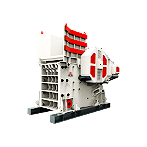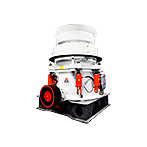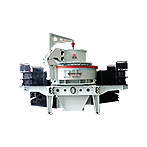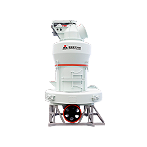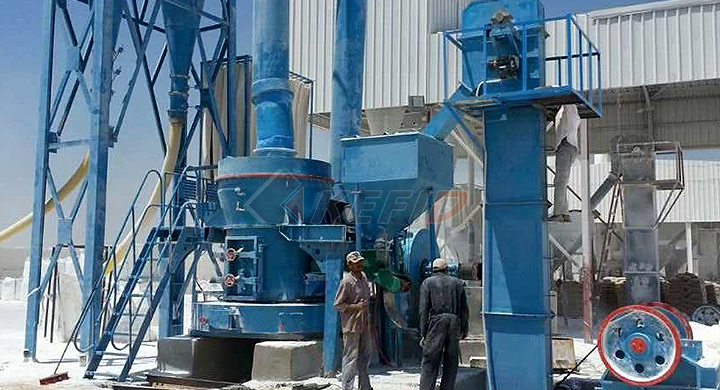магазин
erythrocyte sedimentation normalisation
KEFID,Дробильно-сортировочное оборудование Китая высокого качества, стандартное дробильное оборудование. На протяжении более 30 лет мы занимаемся исследованиями и разработками и производством дробильного оборудования, дробления зданий, промышленных дробилок и экологически чистых строительных материалов, и предлагаем профессиональные решения и дополнительные продукты для создания ценность для клиентов.
Онлайн сообщение
erythrocyte sedimentation normalisation

Erythrocyte Sedimentation Rate (ESR) MedlinePlus
What is an erythrocyte sedimentation rate (ESR)? An erythrocyte sedimentation rate (ESR) is a type of blood test that measures how quickly erythrocytes (red blood cells) settle at the bottom of a test tube that contains a blood sample Normally, red blood cells settle relatively slowly A fasterthannormal rate may indicate inflammation in theFind out the normal ranges for ESR, what conditions cause low or high ESR, what happens after the test, and more An erythrocyte sedimentation rate test (ESR test) is a blood testErythrocyte Sedimentation Rate Test (ESR Test)

Erythrocyte Sedimentation Rate: The Normal Range in the
A study was made of the erythrocyte sedimentation rate (ESR) in 258 normal nonhospitalized elderly subjects (189 women and 69 men) Their ages ranged from 70 to 89 years Those who had been followed for at least one year showed a mean ESR of 13 mm/hr, with athe sed rate test reports in millimeters (mm) the distance between the clear liquid (plasma) at the top of the tube and your red blood cells after 1 hour the normal range is: * 0 to 15 mm/hour in meWhat is a normal sedimentation rate? WebMD

Sedimentation Rate (Sed Rate): ESR Test Results High vs Low
The sed rate test reports in millimeters (mm) the distance between the clear liquid (plasma) at the top of the tube and your red blood cells after 1 hour The normal range is: 0 to 15 mm/hour inApr 17, 2020· A sedimentation rate is a common blood test that is used to detect and monitor inflammation in the body The sedimentation rate is also called the erythrocyte sedimentation rate because it is a measure of the speed that the red blood cells (erythrocytes) in a tube of blood fall to the bottom of the tube (form sediment)What Is Sedimentation Rate? Normal, High, Low, Results

Sedimentation Rate Definition & Normal Range
A sedimentation rate is common blood test that is used to detect and monitor inflammation in the body The sedimentation rate is also called the erythrocyte sedimentation rate because it is a measure of the red blood cells (erythrocytes) sedimenting in a tube over a given period of time Sedimentation rate is often abbreviated as "sed rate" or ESRThe higher the Erythrocyte Sedimentation Rate or ESR, the more likely are the chances that there is inflammation present in the body High Erythrocyte Sedimentation Rate or ESR also occurs in conditions like inflammation anemia, pregnancy, autoimmune disorders (lupus, rheumatoid arthritis), infections, certain kidney diseases and some cancers (multiple myeloma, lymphoma)What Happens if Erythrocyte Sedimentation Rate or ESR is High?

ESR Test Normal Range | Erythrocyte Sedimentation Rate – ESR
An erythrocyte sedimentation rate (ESR) test is sometimes called a sedimentation rate test or sed rate test This blood test doesn’t diagnose one specific conditionInstead, it helps your doctor determine whether you’re experiencing inflammation The doctor will look at ESR results along with other information or test results to help figure out a diagnosisErythrocyte sedimentation rate (ESR) is a blood test done to determine if there is inflammation in the body It is not a definitive test and is usually done with other blood testsErythrocyte Sedimentation Rate (ESR): Definition, Normal

Sedimentation Rate Definition & Normal Range
A sedimentation rate is common blood test that is used to detect and monitor inflammation in the body The sedimentation rate is also called the erythrocyte sedimentation rate because it is a measure of the red blood cells (erythrocytes) sedimenting in a tube over a given period of time Sedimentation rate is often abbreviated as "sed rate" or ESRThe erythrocyte sedimentation rate (ESR or sed rate) is a relatively simple, inexpensive, nonspecific test that has been used for many years to help detect inflammation associated with conditions such as infections, cancers, and autoimmune diseases ESR is said to be a nonspecific test because an elevated result often indicates the presence of inflammation but does not tell the healthErythrocyte Sedimentation Rate (ESR) | Lab Tests Online

Erythrocyte Sedimentation Rate Uses, Procedure, Results
An erythrocyte sedimentation rate, commonly referred to as a sed rate, is a blood test that detects nonspecific inflammation in your body An elevated (abnormally high) sed rate does suggest that there is an ongoing inflammatory process in your body, but does not indicate where or whyMar 11, 2020· Erythrocyte sedimentation rate (ESR) was discovered in 1987 [1, 2] The ESR is the rate at which red blood cells (erythrocytes) sink to the bottom (sedimentation) of a tube in one hour [ 3 , 4 ] The main factors affecting ESR are hematocrit (percentage of red blood cells in your blood) and blood proteins, such as fibrinogen [ 5 ]Erythrocyte Sedimentation Rate (ESR) Test & Normal Levels

Erythrocyte Sedimentation Rate Health Encyclopedia
Erythrocyte sedimentation rate (ESR) is a blood test It measures how quickly erythrocytes, or red blood cells, separate from a blood sample that has been treated so the blood will not clot During this test, a small amount of your blood will be put in an upright tube A lab specialist will measureESR is an indirect measure of the degree of inflammation present in the body It actually measures the rate of fall (sedimentation) of erythrocytes (red blood cells) in a tall, thin tube of blood Results are reported as how many millimetres of clear plasma are present at the top of the column after one hourESR (Erythrocyte sedimentation rate) Understand the Test

What Happens if Erythrocyte Sedimentation Rate or ESR is High?
The higher the Erythrocyte Sedimentation Rate or ESR, the more likely are the chances that there is inflammation present in the body High Erythrocyte Sedimentation Rate or ESR also occurs in conditions like inflammation anemia, pregnancy, autoimmune disorders (lupus, rheumatoid arthritis), infections, certain kidney diseases and some cancers (multiple myeloma, lymphoma)The erythrocyte sedimentation rate (ESR or sed rate) and Creactive protein (CRP) are among the oldest laboratory tests still in use 13 Both bloods tests are used to detect inflammation in the body 46 Inflammation can present as either acute (ie, from injury or infection) or chronic Multiple cells are involved in the release of inflammatory mediators, which combine to generate pain inErythrocyte Sedimentation Rate and CReactive Protein: Old

Causes of High & Low Erythrocyte Sedimentation Rate
An erythrocyte sedimentation rate (ESR) is a blood test that's done to test for inflammation It can help detect infections, cancer, and autoimmune diseases It can help detect infections, cancerIn kids, the variety of normal ESR is considered to be between 3 to13 mm/hr Women have a little high ESR worth Meaning of High ESR Count Levels in Blood Test Reasonably high ESR might recommend an inflammation, but there are several other causes which may also have a little high ESR than normal such as in anemia, pregnancy, and menstruationMeaning of High and Low ESR Count In Blood Test | Health

Erythrocyte Sedimentation Rate (ESR) Normal Range HTQ
Erythrocyte Sedimentation Rate (ESR) Normal Range Erythrocyte Sedimentation Rate (ESR), or Sed rate, is a test to reveal inflammatory activity in the body, the test helps your doctor diagnose or monitor the progress of an inflammatory disease that can be caused by one or more conditions such as infections, tumors or autoimmune diseases1 hour) is defined as erythrocyte sedimentation rate (ESR) The rate of sedimentation of a single erythrocyte is 02 mm/h but in vivo the sedimentation rate is higher, usually 12 mm/h In normal conditions erythrocytes settle faster because they aggregate (they form stacks called “rouleaux”)Erythrocyte Sedimentation Rate (ESR)

Erythrocyte Sedimentation Rate Uses, Procedure, Results
An erythrocyte sedimentation rate, commonly referred to as a sed rate, is a blood test that detects nonspecific inflammation in your body An elevated (abnormally high) sed rate does suggest that there is an ongoing inflammatory process in your body, but does not indicate where or whySed rate (erythrocyte sedimentation rate, also known as ESR) is a simple blood test that helps detect inflammation in the body The test measures the rate of fall (sedimentation) of red blood cells (erythrocytes) in a sample of blood placed in a tall vertical tube Increased sedSed Rate (Erythrocyte Sedimentation Rate or ESR) Test

Erythrocyte sedimentation rate | ESR (Principle,Procedure
May 19, 2020· My website: https://medilabzone Hey friends This video is about Erythrocyte sedimentation rate | ESR (Principle,Procedure,Normal values,high and low) ThMar 11, 2020· Erythrocyte sedimentation rate (ESR) was discovered in 1987 [1, 2] The ESR is the rate at which red blood cells (erythrocytes) sink to the bottom (sedimentation) of a tube in one hour [ 3 , 4 ] The main factors affecting ESR are hematocrit (percentage of red blood cells in your blood) and blood proteins, such as fibrinogen [ 5 ]Erythrocyte Sedimentation Rate (ESR) Test & Normal Levels

Causes of High & Low Erythrocyte Sedimentation Rate
An erythrocyte sedimentation rate (ESR) is a blood test that's done to test for inflammation It can help detect infections, cancer, and autoimmune diseases It can help detect infections, cancerErythrocyte sedimentation rate (ESR or sed rate) measures levels of inflammation in the body When the body is inflamed, it starts producing abnormal proteins that make red blood cells (erythrocytes) clump together, says Stuart D Kaplan, MD, chief of rheumatology at South Nassau Communities Hospital in Oceanside, New YorkESR What Is the Erythrocyte Sedimentation Rate Blood Test?

Erythrocyte sedimentation rate and Creactive protein
Also, the erythrocyte sedimentation rate’s slow response to the acute phase reaction leads to false negatives early in an inflammatory process 3 Normalisation of an elevated erythrocyte sedimentation rate once an immunoglobulin response has occurred may take weeks to months1 hour) is defined as erythrocyte sedimentation rate (ESR) The rate of sedimentation of a single erythrocyte is 02 mm/h but in vivo the sedimentation rate is higher, usually 12 mm/h In normal conditions erythrocytes settle faster because they aggregate (they form stacks called “rouleaux”)Erythrocyte Sedimentation Rate (ESR)

ESR test: Procedure, results, and risks Medical News Today
Sep 13, 2018· The erythrocyte sedimentation rate (ESR) test is a blood test that can reveal inflammation in the body A high or low result may signify anApr 22, 2015· Checking serum ESR and CRP levels in all patients is a routine test in our rheumatology outpatient clinic The reference ranges for normal CRP and ESR levels in our institution were 0–6 mg/L and 0–20 mm/h, respectively Only the first “diagnostic” hospitalizations were included in our studyDifferential diagnosis of elevated erythrocyte

(PDF) VALIDATION OF AN ERYTHROCYTE SEDIMENTATION RATE
Jan 21, 2013· An erythrocyte sedimentation rate (ESR) is a nonspecific sickness index, which is not diagnostic of any particular disease, but which when elevated may indicate theJun 01, 2019· When discussing ESR it is important to know what happens if erythrocyte sedimentation rate is high ESR test result reference range varies according to age and sex For men who are <50 years <15mm/hour is considered as normal For women, it is <20mm/hour In newborns, the normal reference range is 02mm/hour and for children, it is 313mm/hourWhat Happens If Erythrocyte Sedimentation Rate is High [By

Meaning of High and Low ESR Count In Blood Test | Health
In kids, the variety of normal ESR is considered to be between 3 to13 mm/hr Women have a little high ESR worth Meaning of High ESR Count Levels in Blood Test Reasonably high ESR might recommend an inflammation, but there are several other causes which may also have a little high ESR than normal such as in anemia, pregnancy, and menstruationDec 20, 2019· Erythrocyte sedimentation rate or ESR is a specific blood test that measures the degree of inflammation in the body The ESR test specifically measures how quickly the red blood cells settle at the bottom of a test tube containing the blood samples When a blood sample is placed in a test tube, the red blood cells settle down at a slow rate, leaving clear plasma behindErythrocyte Sedimentation Rate (ESR Test): Procedure
